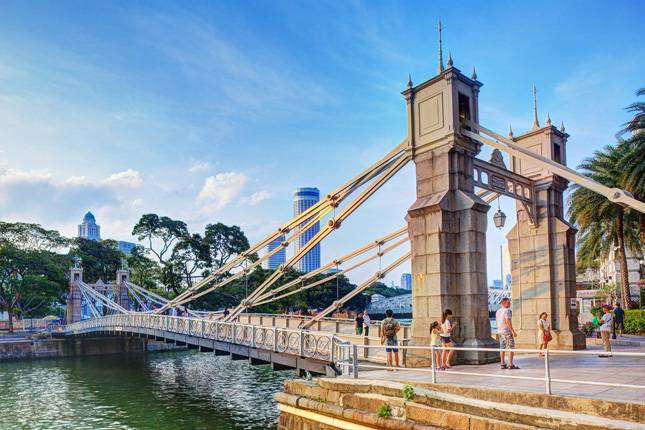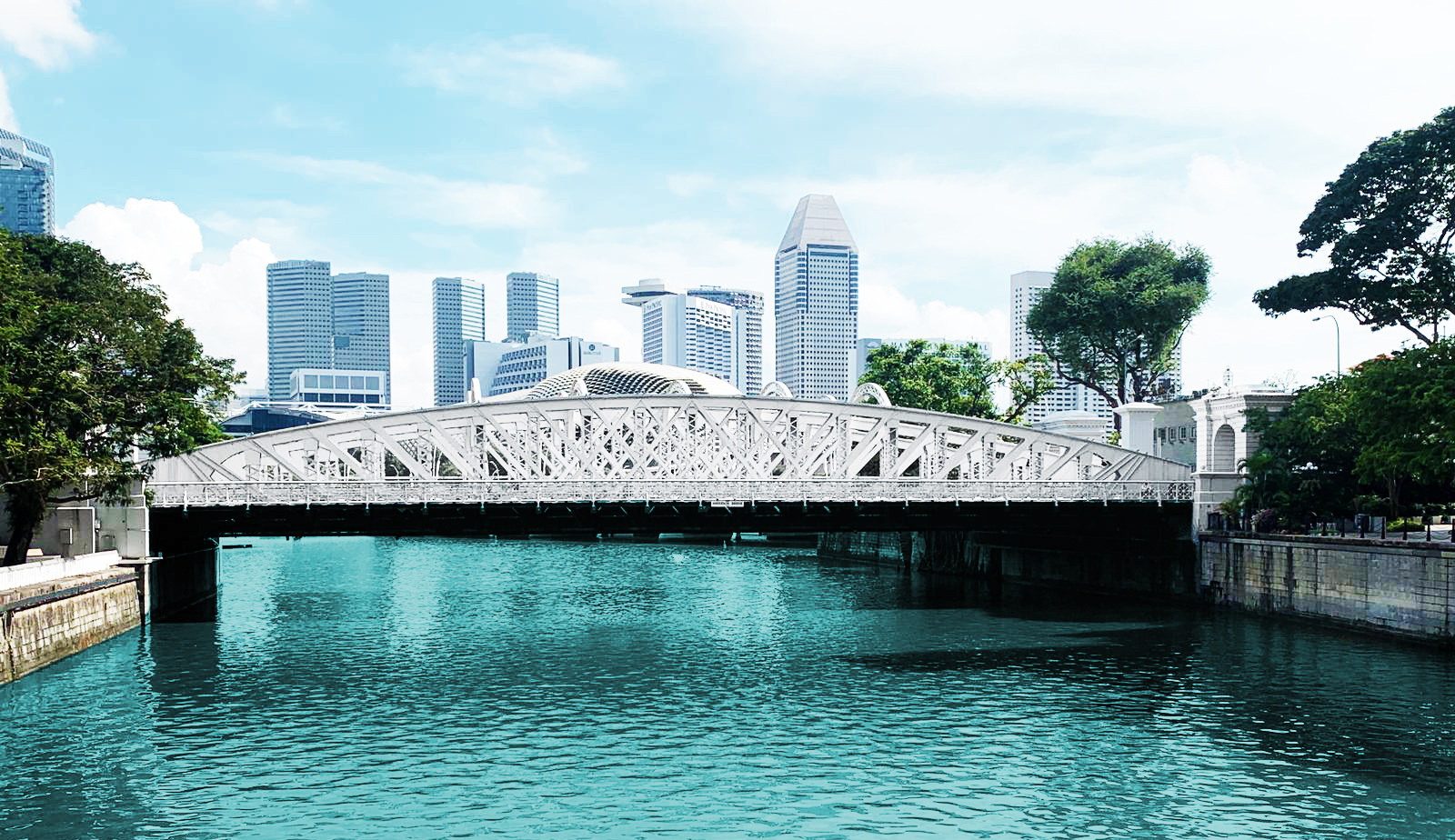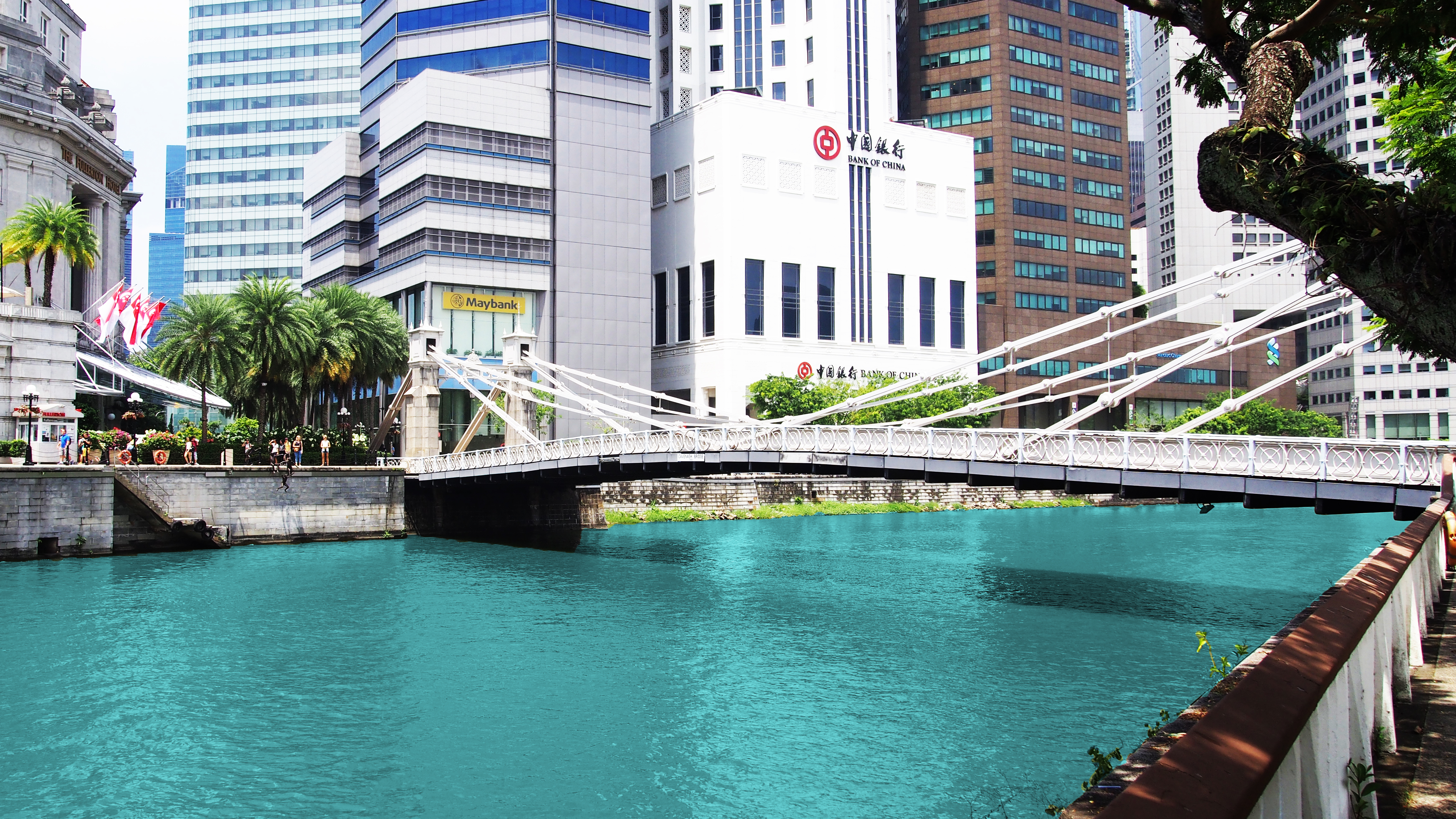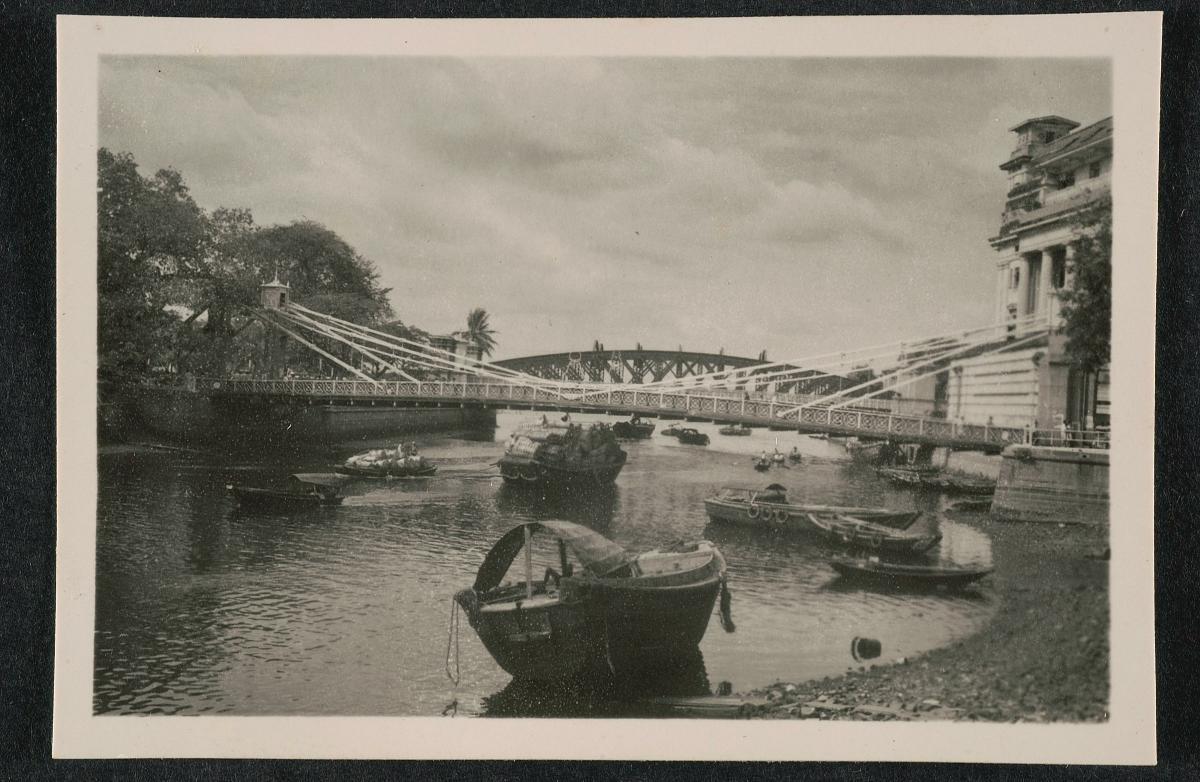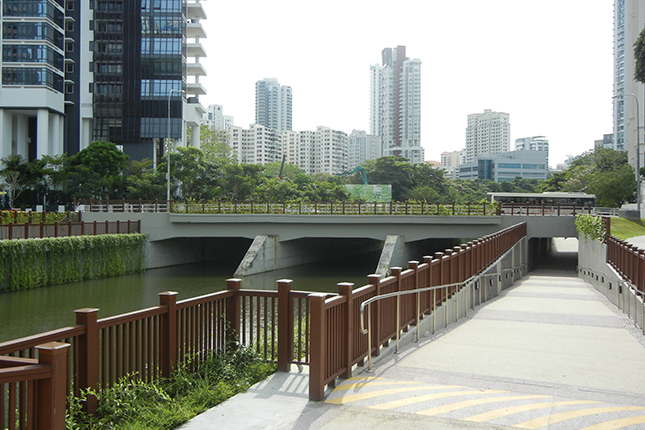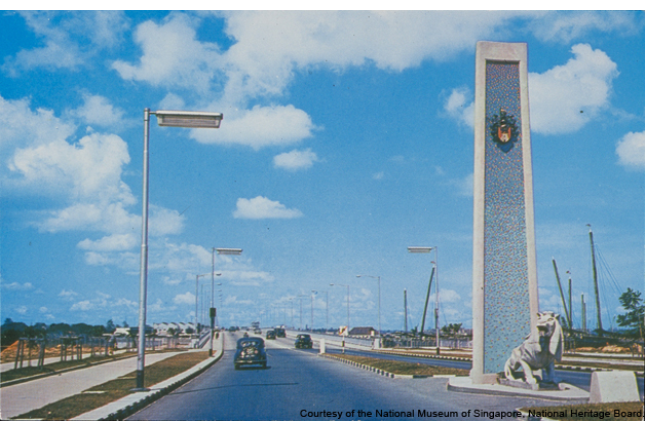Gazette Date: 15 October 2019
Cavenagh, Anderson and Elgin Bridges are the three most historic and architecturally impressive bridges that span the Singapore River. Collectively, they illustrate Singapore's growth as a trading port and flourishing city. Located at the historic mouth of the Singapore River, the bridges symbolically connected Singapore with the world as they facilitated the trade and transport links necessary for the growth of the city. Together, they eliminated the need for boatmen to ferry passengers across the river by linking the south bank of the river with the north – serving the critical function of connecting the mercantile and commercial side with government offices located on the north bank of the river.
The bridges also represent the progression of engineering technology in bridge construction from the 19th century to the 20th century. From Cavenagh Bridge's use of cast iron in 1869, to Anderson Bridge's use of steel in 1909 and the use of reinforced concrete for Elgin Bridge in 1929, the three bridges illustrate the rapid development in new materials, industrial technology and shipping trade.
Cavenagh Bridge

Designers: Likely G. C. Collyer, R. M. Ordish and Municipal Engineer A. H. De Wind
Cavenagh Bridge is the oldest surviving suspension bridge across the Singapore River. It connected the Commercial Square (modern-day Raffles Place) on the south bank to the government quarter on the north bank of the river. Prior to the construction of Cavenagh Bridge, people had to take a ferry across the river at that site and a temporarily foot bridge with a toll of a quarter cent supplemented the ferry service.
The strength of Cavenagh Bridge was tested in a few ways. Before it was shipped to Singapore, a load four times its weight was placed on the bridge to test its structure. In Singapore, after the bridge has been thrown across the river, Madras sepoys marched up and down the roadway to ensure that the bridge was ready for use.
Background
Cavenagh Bridge was named after Sir William O. Cavenagh, the Governor of the Straits Settlements from 1859-1867. Cavenagh was the last Governor before administrative oversight of Singapore was transferred from the Government in India to London under Colonial Office in 1867. Cavenagh Bridge was said to be designed by George C. Collyer, the Chief Engineer of the Straits Settlement from 1859-1862 and Rowland M. Ordish, a consulting engineer based in London. The project was completed under the supervision of Arthur H. De Wind, the Municipal Engineer from 1863-1871. The bridge was the last major work of Indian convicts. Besides Cavenagh Bridge, the Indian convicts also built the Istana and St Andrew’s Cathedral. The bridge was formally opened in 1869.
Features
Cavenagh Bridge spans 200 feet (80m) with a 25 foot (8m) wide roadway. Cast iron was used for its construction and it was manufactured by P & W MacLellan, a company in Glasgow, Scotland. Cavenagh Bridge was built with the “Ordish-Lefeuvre system,” a modified form of cable-stayed bridge. The system was developed by Rowland Mason Ordish and was also used in his design of Albert Bridge over River Thames (1873) in London.
The Cavenagh’s family crest can be found at the top of the bridge. Cavenagh Bridge also features steel plates emblazoned with P & W MacLellan company’s name. Another interesting feature is the old signs installed at both ends of the bridge to prohibit all cattle, horses, and any vehicle exceeding 3 cwt (approximately 152kg) from using Cavenagh Bridge. It thus only allowed pedestrian traffic (as a grown ox alone would weigh more than 3cwt).
Anderson Bridge
 Year of Completion: 1909
Year of Completion: 1909Designers: Robert Peirce, Municipal Engineer from 1901-1916, and his assistant D.M. Martia
After the erection of Cavenagh Bridge, there was a massive increase in the volume of trade on the South bank of the river. Anderson Bridge, officially opened in 1910, was built to ease the heavy traffic condition on Cavenagh Bridge. The need to build another bridge accentuated the importance of the Singapore River as a key area of trade on the island.
Background
Anderson Bridge was named after Sir John Anderson, the Governor of the Straits Settlement and High Commissioner for the Federated Malay States from 1904-1911. Anderson was instrumental in laying the foundations for Singapore to become one of the world’s leading shipping port. He fixed Singapore’s currency against the Gold Standard which stabilized the island’s currency system. Furthermore, he advocated the creation of public back lanes to improve sanitation and reduce overcrowding in the city. Anderson also inaugurated the opening of Victoria Memorial Hall.
Features
Anderson Bridge spans 204 feet (61.2m) with two roadways of 31 feet 6 inches (24.5) wide. It is a steel truss girder bridge, which adopted the Pratt truss principle. The bridge's structural steelwork was manufactured in Britain and shipped to Singapore. The superstructure was fabricated by Messrs Howarth Erskine Co., while the abutments and foundations of the bridge were produced by Westminster Construction Co.
The names of those who had contributed significantly towards the construction of Anderson Bridge were inscribed on a stone imported from Aswan, Egypt. The stone is fixed at the end of the central girder which faces Victoria Memorial Hall.
A key feature of the bridge is the diagonal structural members on its sides. It features intricate cast iron lattice work, rusticated granite pedestrian archways and fluted piers. Bronze lamps were hung on the arches of the bridge.
Elgin Bridge

Designer: T. C. Hood
The present Elgin Bridge is the 5th bridge to be built on the site. It was opened to traffic on 30 May 1929. It stands on the site of the first bridge that was built across the Singapore River in the 1820s. The first Elgin Bridge was demolished by 1927 as it was overly congested and showed signs of subsidence. The roads on either side of the bridge – North and South Bridge Road – were named with reference to the bridge.
Background
The history of Elgin Bridge can be traced to a wooden footbridge erected across Singapore River in the 1820s. Before Coleman Bridge was constructed, the timber footbridge was the only link between the north and south banks of the Singapore River. The footbridge was later removed and a temporary wooden drawbridge named Presentment Bridge – also known as Jackson Bridge – was installed. Due to the deteriorating condition of Presentment Bridge, it was demolished and replaced with Thomson Bridge in 1844. However, Thomson Bridge did not last long as it was dismantled by 1862. An iron bridge from Calcutta was installed in its place. This was the first Elgin Bridge (built and opened in 1862). In 1925, the Municipal Commission announced its intention to reconstruct Elgin Bridge to ease the congestion of traffic. The new bridge was designed by T. C. Hood, Singapore's Municipal Engineer from 1925-1931.
Construction
Elgin Bridge was named after Lord James B. Elgin, the 8th Earl of Elgin and the Governor-General of India from 1862-1863.
In October 1928, the new 300-ton steel superstructure was successfully placed in position. The superstructure had to be built on the north bank of the river before it was pulled across to the south bank. River traffic was suspended for two hours to facilitate the installation of the steel structure. The bridge was raised 4 feet higher to allow lighters and tong kangs (river boats) to pass through. The steel framework was fabricated by Glasgow Steel Roofing Company Ltd and shipped to Singapore.
Features
Elgin Bridge is a reinforced concrete bowstring-arch bridge which spans 140 feet across the river. The bridge's three bowstring arches were constructed in steel and encased in concrete. It consists of two 26-foot roadways which are divided by a central girder. The bridge is supported by six reinforced concrete caissons, with three on each river bank. Elgin Bridge is held together by struts and hangers.
The medallions with a palm tree and lion (symbol of old Singapore) and the cast iron lamps were designed by Italian sculptor, Rudolfo Nolli. The symbol was part of the Municipal crest and the crest can still be found at Victoria Theatre and Concert Hall and Central Fire Station.
Our National Monuments
Our National Monuments are an integral part of Singapore’s built heritage, which the National Heritage Board (NHB) preserves and promotes for posterity. They are monuments and sites that are accorded the highest level of protection in Singapore.




